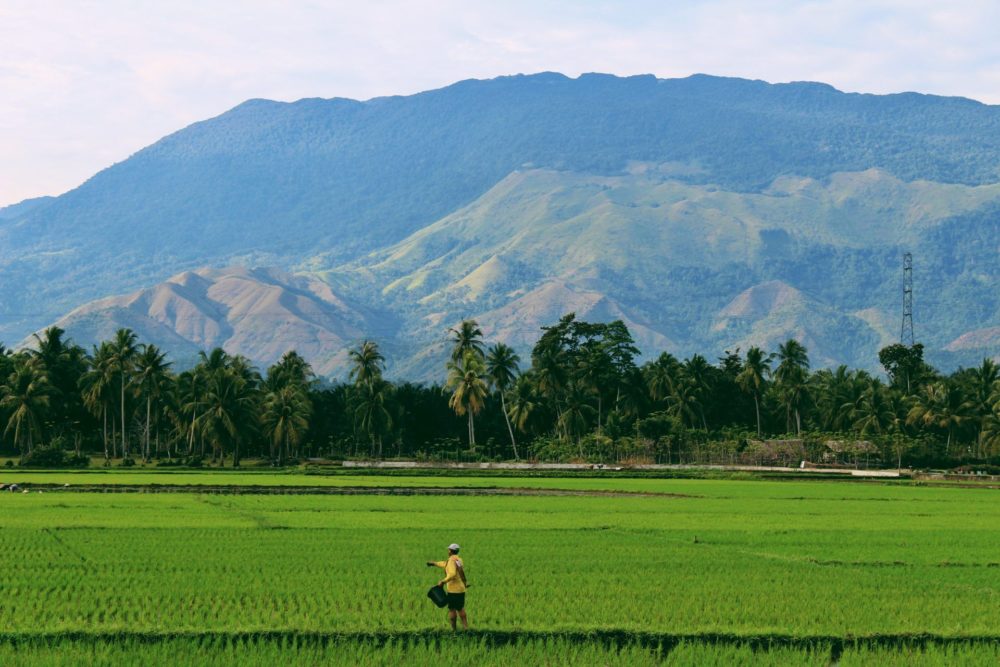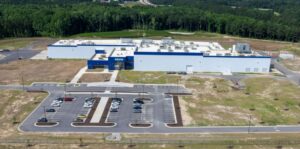An awful lot of the business of farming comes down to educated guesswork, preparedness for the unexpected, and more than a fair bit of plain old good luck.
Thankfully, technology is taking much of this uncertainty out of agriculture. With sensors that determine soil moisture levels, software that pinpoints specific areas of the field for treatment, and platforms that offer accurate and highly localized weather forecasts, less is left to chance – leading to more efficient deployment of resources, improved yields, and better returns on investment.
But precision ag technologies like these remain out of reach for the majority in many parts of the world. For low-income smallholders working meager plots in Africa, Asia, and elsewhere, installing a constellation of soil probes or climatic sensors on their land is not only unaffordable; in many cases it’s impractical, too.
Emerging markets, in particular, rely on these small farms to supply approximately 80% of their food. And with the climate changing and populations growing, food security and sustainability are paramount.
Giving these smallholders greater access to such solutions could vastly improve their output and allow them to use their limited resources more effectively, bringing enhanced security to the food system – while also increasing their incomes and safeguarding their livelihoods.
That’s what agritech startup SupPlant and weather intelligence firm ClimaCell are aiming to do through their new partnership.
Israel’s SupPlant offers an autonomous crop watering system it calls ‘Growth Based Irrigation,’ which collects data from on-site sensors — as well as from third-party sources via the cloud — to help farms optimize their water usage.
Hub and spoke approach
Currently, the service is dedicated to large and medium-sized farming operations, says Tom Lahad, board co-chairman at SupPlant and an investor in the company.
“What we are aspiring to do [with] ClimaCell is to take this tech that enables the biggest and most sophisticated farms on Earth, and [use it to] equip smallholder farmers with the same knowledge and understanding and recommendations,” he tells AFN.
SupPlant aims to do this with the help of Boston-based ClimaCell, by leaning on the latter’s highly granular, down-to-the-meter and down-to-the-minute weather forecasting capabilities – reducing the need for expensive and impractical sensors and other IoT devices.
Instead, the two partners will adopt what Lahad calls a ‘hub and spoke’ approach in smallholder farming communities. Initially, they’ll be focusing on India and China, which are home to almost 300 million smallholders out of an estimated half-a-billion worldwide.
“You take one small farm, put our fully autonomous system there, and use that first to demonstrate its benefits – because trust is at the heart of things,” he says. “We can duplicate that to thousands of farmers around this base station with the same soil type and crop varieties […] They don’t need to pay for sensors, because they see a mirror of that.”
ClimaCell makes this possible by using data from diverse sources such as telecom towers, aircraft, and closed-circuit cameras to build proprietary models that provide customers with hyper-local analytics and predictions on weather conditions. It counts the likes of Amazon, Uber, and United Airlines among its clients, and recently raised $23 million in a Series C round led by Pitango Growth and Square Peg Capital.
Seeking third parties
One of the biggest advantages for the collaboration is the ability to leverage existing ClimaCell data and relationships, the US company’s chief marketing officer Dan Slagen tells AFN.
“In the [Asia-Pacific] region we’re already working with SoftBank, Swiggy, and IndiGrid,” he said.
“When Cyclone Amphan hit India [in May] we were able to tell IndiGrid, which has over 300 energy towers across thirteen states, exactly which two out of those 300 towers would be most impacted, so they could position their [maintenance] crews at those two towers to be ready to get the power up and running again.”
“It’s that caliber of tech that farmers in India are getting through this partnership with SupPlant,” he adds.
The two companies are now seeking out local partners in both India and China, as well as other smallholder-driven agricultural markets including Mexico and Vietnam.
“We understand ag, ClimaCell understands weather – but we need local partners who understand the soil, the habits, and the heart and soul of local farmers,” Lahad says.
“So at the heart of this collaboration lies that third party, which has to be someone who has access to the market, but even more so has deep cultural understanding.”
Dramatic results
Lahad admits that the stripped-down solution that SupPlant’s offering to smallholders can’t have the same impact as putting a full cloud-connected irrigation system on each and every farm (even if it was financially and technologically viable to do so.) But what’s more important is getting results for smallholders as quickly, efficiently, and sustainably as possible – and at an affordable price. The partners believe they can scale their solution to a point where it would cost farmers the equivalent of $15 per year.
“I have to be honest – it’s not as good as putting an autonomous system in place for every Indian farmer. But [with the hub-and-spoke approach] we’ve already seen dramatic results; up to 40% increases in yield, even without that sophistication,” Lahad says.
“The most important thing for these farmers is they just haven’t had great weather, or great irrigation, models – and if their models aren’t adaptive, sadly they are among the populations who will really be feeling climate change in their bones. Thanks to ClimaCell, a big part of what we are doing is to take weather data and translate it into the right agronomist actions that need to be applied on these farms.”
What are your thoughts on precision ag and tech in smallholder economies? Let me know at [email protected]




